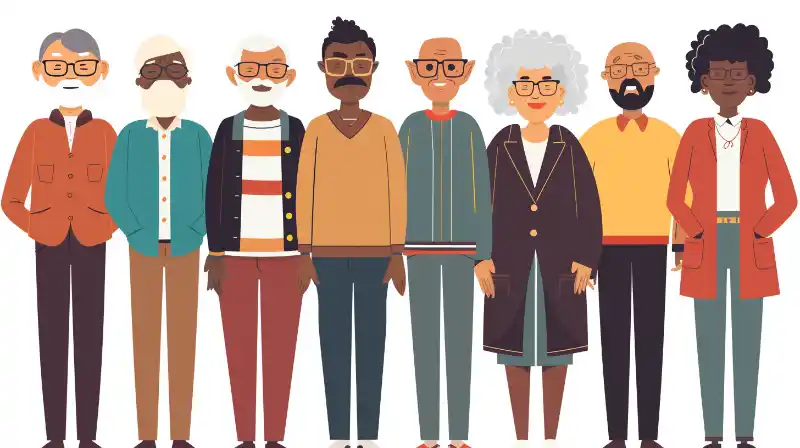As you age, deciding when to sell your home and transition to a senior living community can be tough. The latest reports show that the average occupancy in senior housing is on the rise, hinting at a strong trend.
This post will illuminate why these communities are sparking quick home sales this year, helping you make an informed decision. Discover the catalysts fueling this surge in 2024.
Key Takeaways
- Senior living communities are in high demand, causing more seniors to sell their homes and move in. These places offer care and activities for older adults.
- Rising costs because of inflation make it harder for some people to afford senior housing. Big companies are buying smaller ones to save money.
- Technology like AI and health – tracking devices is improving care in these communities. This keeps seniors safe and healthy.
- Homes in senior living areas sell fast because they give what many older adults want: safety, healthcare, and fun with friends.
- New wellness programs help seniors stay fit and happy. Staff training, better pay, and listening to resident feedback improve life in these communities.
Current Trends in the Senior Housing Market

As you explore the evolving landscape of the senior housing market, you’ll discover a dynamic interplay between consumer demand and innovative service offerings. This sector is increasingly influenced by demographic shifts and technological advancements that are reshaping the retiree living experience.
Rising Occupancy Rates
More seniors are choosing to live in communities designed just for them. These places offer care and fun activities that fit the needs of older adults. That’s why more people now fill up senior living spaces.
In fact, these homes have seen more folks move in for 10 quarters straight.
Assisted living spots have really caught on, with lots of older adults moving in recently. This type has grown the most compared to other senior places like where you can live on your own or get special nursing care.
It’s a sign that these communities offer something great that seniors want as part of their daily lives.
Focus on Wellness-Oriented Communities
Senior living communities are putting your wellness first. They’re creating spaces where you can live a healthier lifestyle, stay active, and connect with others. Research shows that by 2023, more than half of retirement places will focus on wellness over just providing care.
This is not just a trend; it’s the future of senior living.
These communities offer things like fitness classes, healthy meals, and mental health support. You have access to gardens, walking paths and even art studios. It’s about keeping both your body and mind in shape as you enjoy your later years.
Services like telehealth also make it easier for you to get medical care right from home. These changes mean better lives for seniors who want more than just a place to live—they want a community that helps them thrive.
Economic Challenges
In 2024, you face inflationary pressures and capital market challenges as senior living operators. These factors hit hard on budgets and investments in the industry. Costs for care, services, and housing keep going up.
Finding money to pay for these things gets tougher.
The aging population grows quickly, but new places for seniors to live do not grow as fast. This makes it harder to find affordable housing options. High prices also make it difficult to get into homes that match your needs without spending too much money.
You must look carefully at costs before choosing a place to live or invest in.
Market Consolidations
Big companies are buying smaller senior living facilities. This is called market consolidation. It happens because the big companies want to grow and cut costs. They often merge with or buy other businesses in their field.
These mergers and acquisitions can help them provide better care for you. They use economies of scale, which means they save money by serving many people at once. Saving money here can lead to investing more in health services and technology for your care.
This might include things like advanced artificial intelligence systems that watch over your health day and night.
Advanced Technology for Continuum of Care
Senior living communities are getting a tech upgrade in 2024. Fancy gadgets like AI-powered systems and wearable devices are popping up everywhere. These tools help keep track of health data and alert nurses if something’s not right.
They make life safer for residents who need a little or a lot of care.
Think of it this way, these technologies act like invisible helpers. They watch over seniors round the clock, making sure they get help when they fall or forget their meds. This kind of care helps seniors live better lives without always needing someone by their side.
It’s smart, efficient, and keeps families worry-free about their loved ones’ well-being.
The Impact of Senior Living Communities on Home Sales

The emergence of senior living communities as a driving force in the real estate market has reshaped patterns of homebuying and selling among the aging population. This trend underscores a significant shift towards downsizing and specialized accommodation, fueling rapid sales in homes formerly occupied by seniors transitioning to these tailored environments.
Increased Demand for Senior Living Spaces
More seniors want homes in senior living communities. These places give them care, comfort, and chances to meet others. Assisted living is popular among investors because many older adults choose it.
The number of older people is growing fast. So, more seniors need homes with special services made just for them.
Builders are making more senior living spaces to meet this demand. Homes in these communities sell quickly because they offer what many seniors look for: safety, health care, and fun activities with friends.
Good senior housing also helps folks feel less alone and live healthier lives longer.
The Effect of Inflation and Home Prices on Life Plan Communities
Inflation and rising home prices are squeezing life plan communities. The costs for things like staff, food, and heat are all going up. These higher costs mean life plan communities have to charge more for independent living and assisted living.
Some places also offer memory care services or other types of help.
Home sales affect these communities too. As house prices go up, some seniors find it harder to sell their homes at a good price. This can make it tough for them to move into senior living spaces.
Yet even with these challenges, there’s still a strong need for comfortable places where seniors can live with care and support.
Strategies to Stay Ahead in the Senior Living Market
To maintain a competitive edge in the rapidly evolving senior living market, operators must adopt innovative strategies that address the unique demands and challenges of today’s aging population.
Developing a keen understanding of market dynamics and consumer expectations is essential for fostering resilience and achieving sustained growth within this sector.
Emphasizing Wellness and Care
Senior living communities are now focusing on your wellness. They want you to live a healthier and more engaged life.
- Senior housing operators are redesigning spaces. They create gyms, walking paths, and gardens for your physical activity.
- Community areas bring people together. You can make friends and join in social activities to beat loneliness.
- Care goes beyond medical needs. Programs for mental wellness and arts keep your mind sharp and spirit high.
- Staff receive training in preventative care. This means they can help you stay healthy before issues arise.
- Meal plans focus on nutrition. Eating right plays a big part in feeling good every day.
- Operators listen to what you need. They use surveys and feedback to improve your living experience.
- Flexible work hours for staff mean happier helpers. When the team is content, they provide better care for you.
- Wages for caregivers have gone up. Higher pay brings qualified people to take care of you.
- Health services use the latest tech like AI and telehealth. These tools give you better health care quickly and easily.
- Many senior living places offer different income options now. No matter your budget, there’s room for you with quality service.
Adapting to Economic Shifts
Economic changes impact how we live as we age. It’s important to understand how senior living communities adjust to these shifts.
- Senior living operators often modify their budgeting strategies. They keep an eye on operational expenses, including labor costs, to manage finances better.
- Communities explore government subsidies like Medicaid. These programs can help make assisted living more affordable for low-income seniors.
- Many communities refinance their loans. This can lead to lower interest rates and reduced monthly payments.
- Operators may add services that appeal to baby boomers who value healthier lifestyles. These can include wellness programs and telehealth services.
- Technology investments are essential. The use of AI technology and robotics in care improves efficiency and quality of life for residents.
- Strategic planning for inventory growth is crucial. Leaders must balance the number of available units with the rise in demand from aging populations.
- Communities enhance their business intelligence systems. This helps them predict market trends and adapt to economic changes quickly.
- Senior housing providers also consider merging with or acquiring other communities. This can strengthen their market position and reduce risks.
Leveraging Technology for Efficient Care
Technology is reshaping how you receive care in senior living communities. New tools are making it possible to get better care faster and more easily.
- Senior living communities are now using advanced technology, including artificial intelligence (AI), which helps track health needs and provide quick support.
- Wearable devices for seniors monitor heart rate, sleep patterns, and physical activity to keep an eye on well-being day and night.
- Nurses and caregivers use tablets and mobile apps to access medical records instantly, ensuring they have up-to-date information about your health.
- AI can analyze data from residents to predict health issues before they become serious problems, leading to fast response times from medical staff.
- Chatbots answer common questions 24/7, so you can get help or information any time you need it without waiting for office hours.
- Smart home features in rooms adjust lighting, temperature, and even call for help if a fall is detected, keeping safety a top priority.
- Virtual reality headsets offer mental stimulation and entertainment options that can also serve therapeutic purposes for memory care patients.
- Communities use software that lets family members check in on their loved ones remotely, fostering peace of mind and keeping them informed about their relative’s well-being.
- Online portals provide easy access to billing, health records, and scheduling appointments with healthcare providers within the community.
FAQs
1. What is causing senior living communities to boost home sales in 2024?
Senior living communities are boosting home sales because they offer specialized care and facilities that meet the needs of seniors, leading to higher occupancy levels reported by NIC MAP Vision.
2. How do occupancy rates in senior housing now compare to before the pandemic?
Current occupancy rates in senior housing have rebounded and are approaching pre-pandemic levels due to increased net absorption, as observed by Senior Housing News (SHN) and Aging Media Network.
3. Why are investors interested in senior healthcare properties like nursing homes?
Investors see a strong return on investment in properties such as skilled nursing facilities due to consistent demand driven by an aging population with Medicare Part A coverage and long-term care requirements.
4. What impact do mixed-income communities have on the market for senior living spaces?
Mixed-income communities enhance market penetration of senior living spaces, appealing to a broad spectrum of income levels which can improve both reputation and financial stability within the sector.
5. Are there technological developments influencing senior housing markets?
Yes, advancements like wearable technology help reduce hospital readmissions and support better resident health monitoring, thus increasing the attractiveness of skilled nursing facilities for potential residents.
Source Links
- https://seniorhousingnews.com/2024/01/01/top-senior-housing-trends-for-2024/
- https://www.natlawreview.com/article/2024-senior-housing-market-outlook
- https://www.multihousingnews.com/senior-housing-trends-in-2024-what-to-expect/
- https://www.us.jll.com/en/trends-and-insights/investor/how-senior-living-is-evolving-for-ageing-populations
- https://seniorhousingnews.com/2023/12/04/inflation-cooler-home-prices-could-challenge-life-plan-communities-in-2024/
- https://www.globest.com/2023/11/28/how-to-fix-senior-housings-affordability-problem/
- https://www.pslgroupllc.com/spring-move-senior-community/






